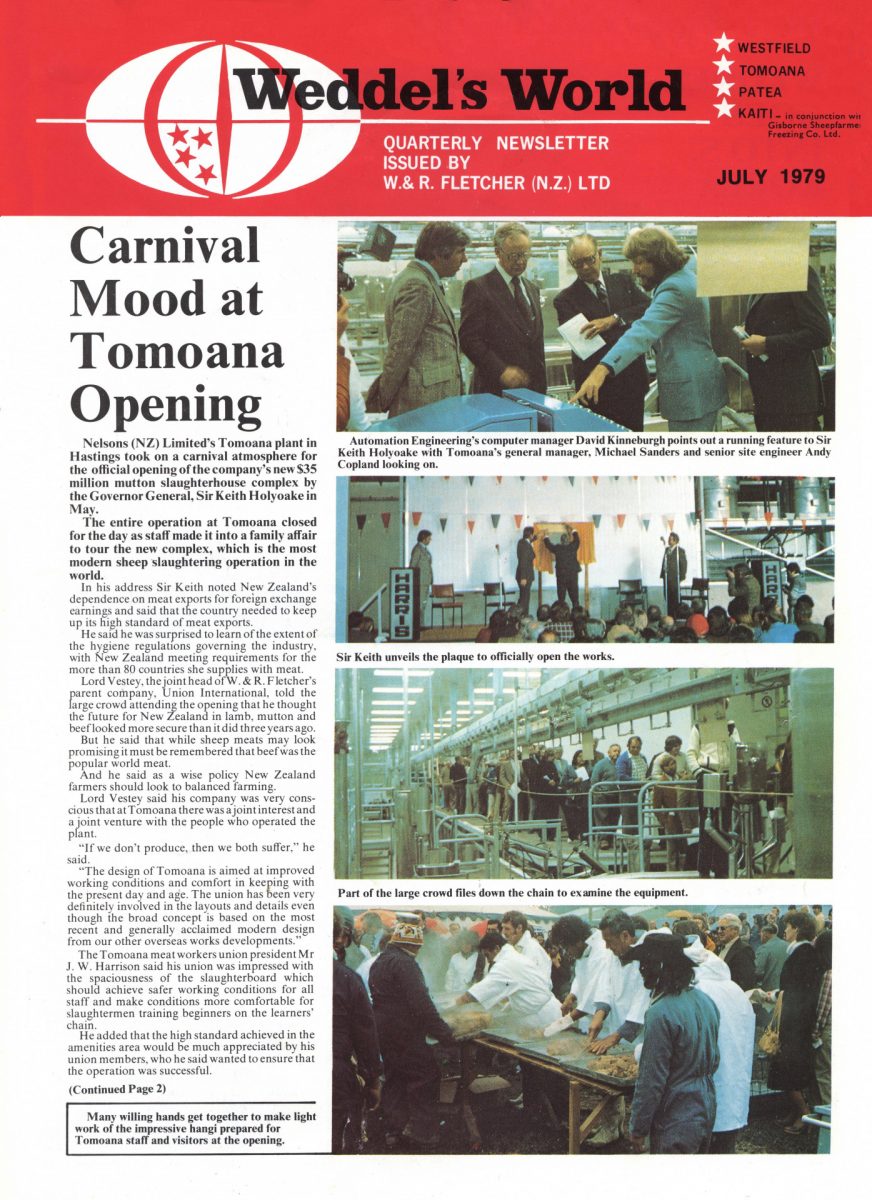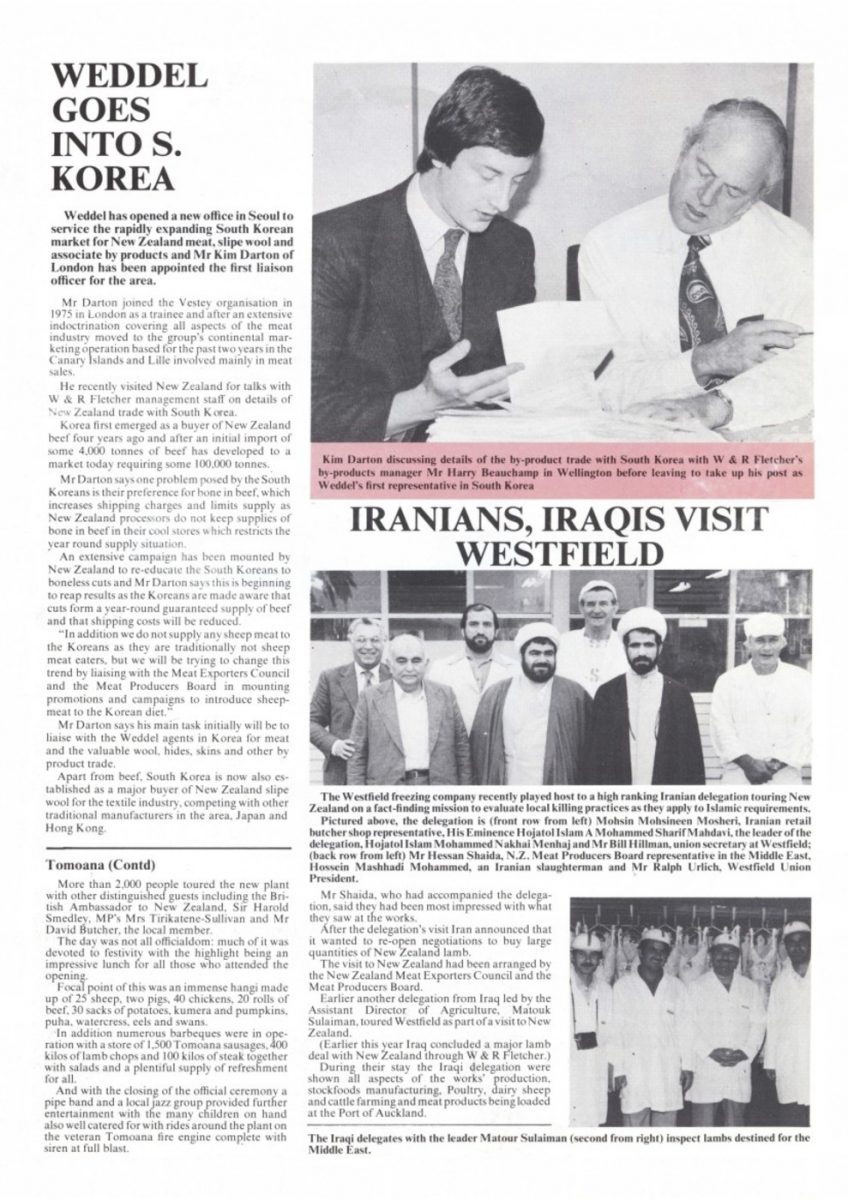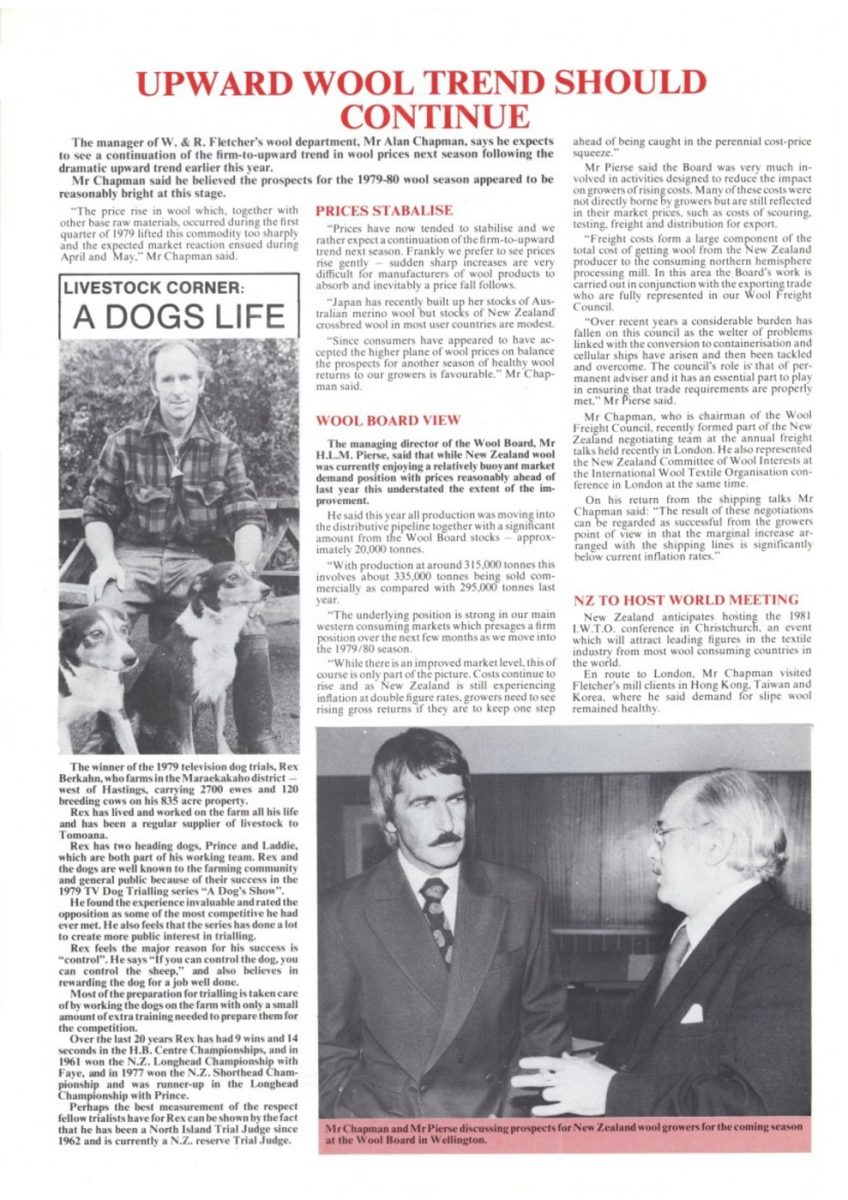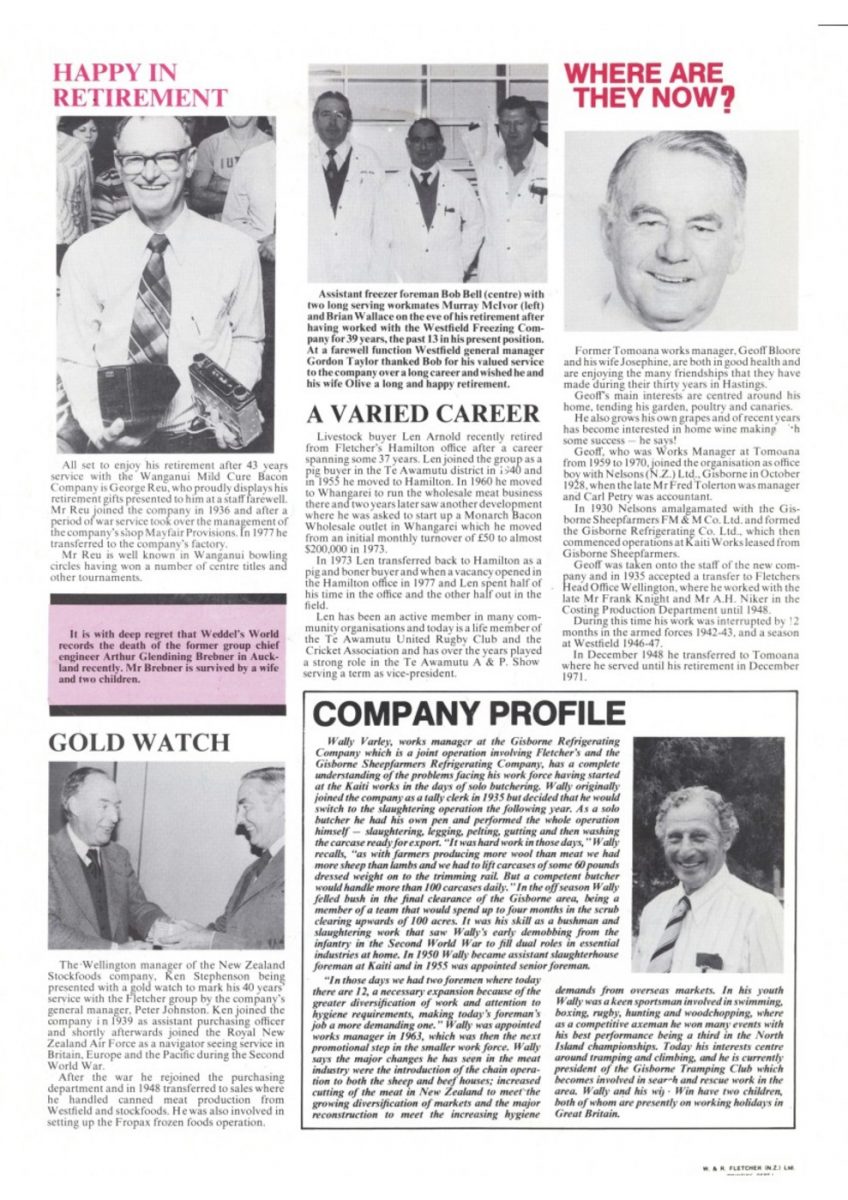UPWARD WOOL TREND SHOULD CONTINUE
The manager of W. & R. Fletcher’s wool department, Mr Alan Chapman, says he expects to see a continuation of the firm-to-upward trend in wool prices next season following the dramatic upward trend earlier this year.
Mr Chapman said he believed the prospects for the 1979-80 wool season appeared to be reasonably bright at this stage.
PRICES STABALISE [STABILISE]
“Prices have now tended to stabilise and we rather expect a continuation of the firm-to-upward trend next season. Frankly we prefer to see prices rise gently – sudden sharp increases are very difficult for manufacturers of wool products to absorb and inevitably a price fall follows.
“Japan has recently built up her stocks of Australian merino wool but stocks of New Zealand’ crossbred wool in most user countries are modest.
“Since consumers have appeared to have accepted the higher plane of wool prices on balance the prospects for another season of healthy wool returns to our growers is favourable.” Mr Chapman said.
WOOL BOARD VIEW
The managing director of the Wool Board, Mr H. L. M. Pierse, said that while New Zealand wool was currently enjoying a relatively buoyant market demand position with prices reasonably ahead of last year this understated the extent of the improvement.
He said this year all production was moving into the distributive pipeline together with a significant amount from the Wool Board stocks approximately 20,000 tonnes.
“With production at around 315,000 tonnes this involves about 335,000 tonnes being sold commercially as compared with 295,000 tonnes last year.
“The underlying position is strong in our main western consuming markets which presages a firm position over the next few months as we move into the 1979/80 season.
“While there is an improved market level, this of course is only part of the picture. Costs continue to rise and as New Zealand is still experiencing inflation at double figure rates, growers need to see rising gross returns if they are to keep one step ahead of being caught in the perennial cost-price squeeze.”
Mr Pierse said the Board was very much involved in activities designed to reduce the impact on growers of rising costs. Many of these costs were not directly borne by growers but are still reflected in their market prices, such as costs of scouring, testing, freight and distribution for export.
“Freight costs form a large component of the total cost of getting wool from the New Zealand producer to the consuming northern hemisphere processing mill. In this area the Board’s work is carried out in conjunction with the exporting trade who are fully represented in our Wool Freight Council.
“Over recent years a considerable burden has fallen on this council as the welter of problems linked with the conversion to containerisation and cellular ships have arisen and then been tackled and overcome. The council’s role is that of permanent adviser and it has an essential part to play in ensuring that trade requirements are properly met,” Mr Pierse said.
Mr Chapman, who is chairman of the Wool freight Council, recently formed part of the New Zealand negotiating team at the annual freight talks held recently in London. He also represented the New Zealand Committee of Wool Interests at the International Wool Textile Organisation conference in London at the same time.
On his return from the shipping talks Mr Chapman said: “The result of these negotiations can be regarded as successful from the growers point of view in that the marginal increase arranged with the shipping lines is significantly below current inflation rates.”
NZ TO HOST WORLD MEETING
New Zealand anticipates hosting the 1981 I.W.T.O. conference in Christchurch, an event which will attract leading figures in the textile industry from most wool consuming countries in the world.
En route to London, Mr Chapman visited Fletcher’s mill clients in Hong Kong, Taiwan and Korea, where he said demand for slipe wool remained healthy.
Photo caption – Mr Chapman and Mr Pierse discussing prospects for New Zealand wool growers for the following season at the Wool Board in Wellington.
LIVESTOCK CORNER: A DOGS LIFE
The winner of the 1979 television dog trials, Rex Berkahn, who farms in the Maraekakaho district west of Hastings, carrying 2700 ewes and 120 breeding cows on his 835 acre property.
Rex has lived and worked on the farm all his life and has been a regular supplier of livestock to Tomoana.
Rex has two heading dogs, Prince and Laddie, which are both part of his working team. Rex and the dogs are well known to the farming community and general public because of their success in the 1979 TV Dog Trialling series “A Dog’s Show”.
He found the experience invaluable and rated the opposition as some of the most competitive he had ever met. He also feels that the series has done a lot to create more public interest in trialling.
Rex feels the major reason for his success is “control”. He says “If you can control the dog, you can control the sheep,” and also believes in rewarding the dog for a job well done.
Most of the preparation for trialling is taken care of by working the dogs on the farm with only a small amount of extra training needed to prepare them for the competition.
Over the last 20 years Rex has had 9 wins and 14 seconds in the H.B. Centre Championships, and in 1961 won the N.Z. Longhead Championship with Faye, and in 1977 won the N.Z. Shorthead Championship and was runner-up in the Longhead Championship with Prince.
Perhaps the best measurement of the respect fellow trialists have for Rex can be shown by the fact that he has been a North Island Trial Judge since 1962 and is currently a N.Z. reserve Trial Judge.















Do you know something about this record?
Please note we cannot verify the accuracy of any information posted by the community.